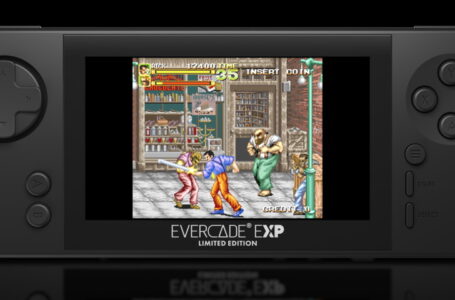Valis III is Valis, but better (and harder)
Like its predecessor, Valis III is a game that enjoyed a number of different releases over the years — and again like its predecessor, its Mega Drive incarnation can be found as part of the Renovation Collection 1 for the Evercade retro gaming system. While similar to the first game — the Mega Drive version of Valis was specifically put together to bring the first title in the series a bit more “up to date” with later installments compared to its original releases — Valis III makes a number of refinements to the formula that ultimately make it a better and more challenging game.
Before we go on: you may note that Valis II (and its super-deformed Mega Drive remake Syd of Valis) is missing from the Renovation Collection 1 cartridge for Evercade; the reason for this is (presumably) that the Evercade is yet to add PC Engine emulation to its lineup at the time of writing, and Valis II was a PC Engine CD game.
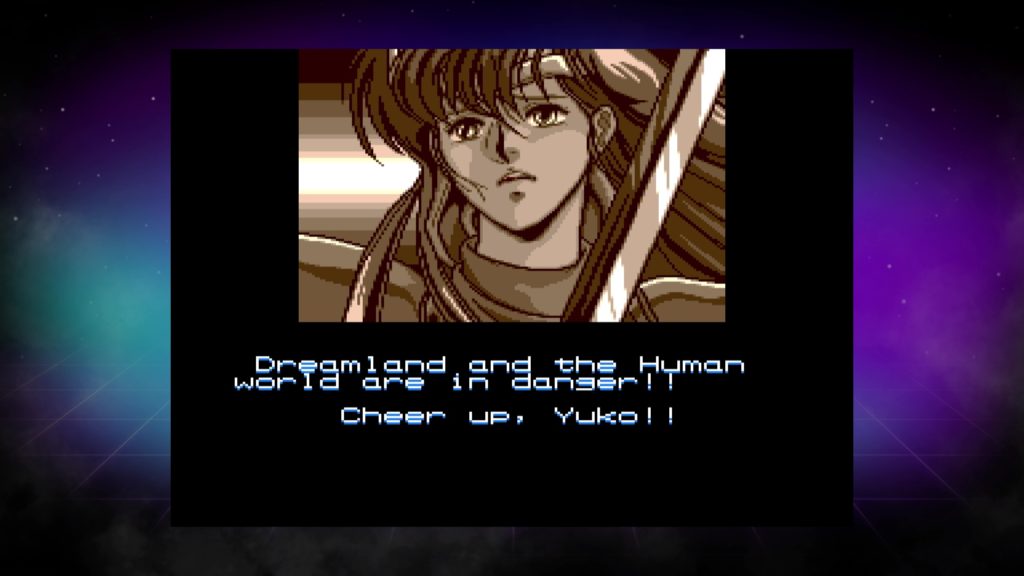
There was also likely voice actor licensing beyond the scope of this initial compilation to deal with — but never say never to a Renovation Collection 2 for Evercade at some point in the future, as the team at Blaze is always actively pursuing new licenses for the platform. In the meantime, Valis II has had a successful officially licensed rerelease as part of the Valis: The Fantasm Soldier Collection for Nintendo Switch, so we’ll likely take a look at that at some point in the near future.
You don’t need to worry too much about missing out on important plot, however, since Valis III opens with a recap of the events of both the original Valis and Valis II. That and the basic narrative of all of them is pretty much the same anyway — there’s a big evil dude who perpetually spells his name in CAPITAL LETTERS and our heroine Yuko Ahso is called to Dreamland to wield the Valis sword and clean up the situation before it gets out of hand.
In this particular instance, the villain is called GLAMES, and interestingly, there’s an attempt to add a bit of a morally ambiguous element to the narrative this time around. During the introductory sequence, we’re informed that the Dark World, where GLAMES lives, is currently under threat of being absorbed into the nether realm, so he simply wants to save himself and his people. The best way he figures of doing that, he figures, is… invading the human world and Dreamland forcibly, making use of his dark counterpart to the Valis sword, Leethus. Ooh, you nearly had us, villain.
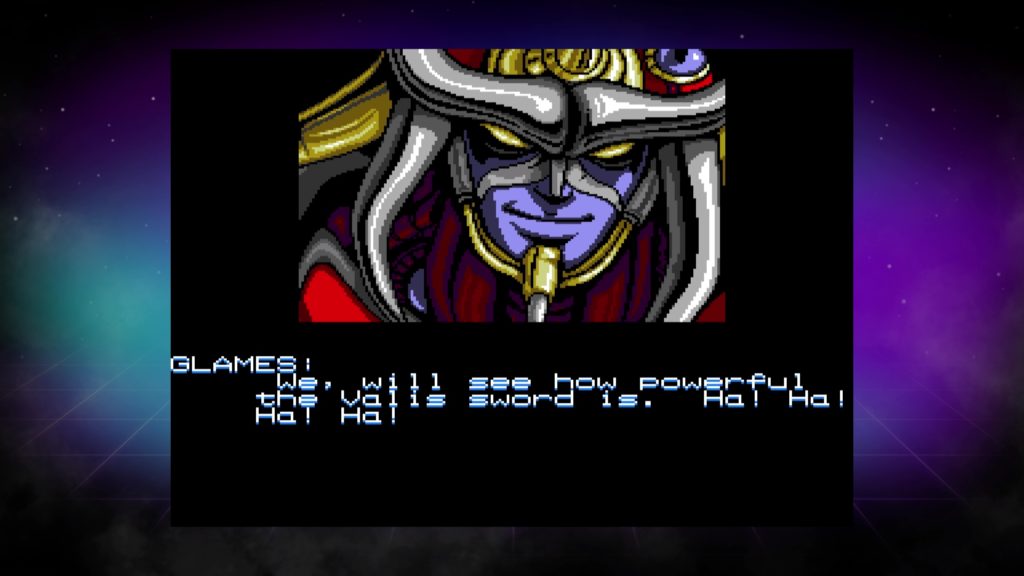
Yuko, initially unaware of this situation, awakens to find the exceedingly cute Cham nicking her Valis sword from her bedroom, chases her across the rooftops, beats the crap out of one of GLAMES’ generals, rescues Cham, learns about the situation and sets off on yet another epic quest — this time to save not only the human world and Dreamland, but also the Dark World too.
The increased level of ambition is almost immediately clear in Valis III. Besides the impressive cutscenes seen in the first game, Valis III also features dialogue during levels, as well as an exciting interactive intro where you control Yuko in her pyjamas, chasing Cham down the street, retrieving the Valis sword and rescuing her from an unpleasant fate. It gives the game much more of an RPG-style feel, despite the fact it’s still a completely linear platform action game at its heart.
There’s one minor issue, though, and it’s the fact that none of the in-game dialogue (i.e. that which appears during levels rather than in cutscenes) is actually attributed to anyone, nor do any of the characters animate or emote to indicate who is speaking. It’s usually reasonably obvious to work out who is actually talking at any given time, but it does make the game a little harder to read than it perhaps needs to be. Given Valis III’s obvious ambition in 16-bit storytelling, this feels like a bit of an oversight — but it’s one you soon get used to.
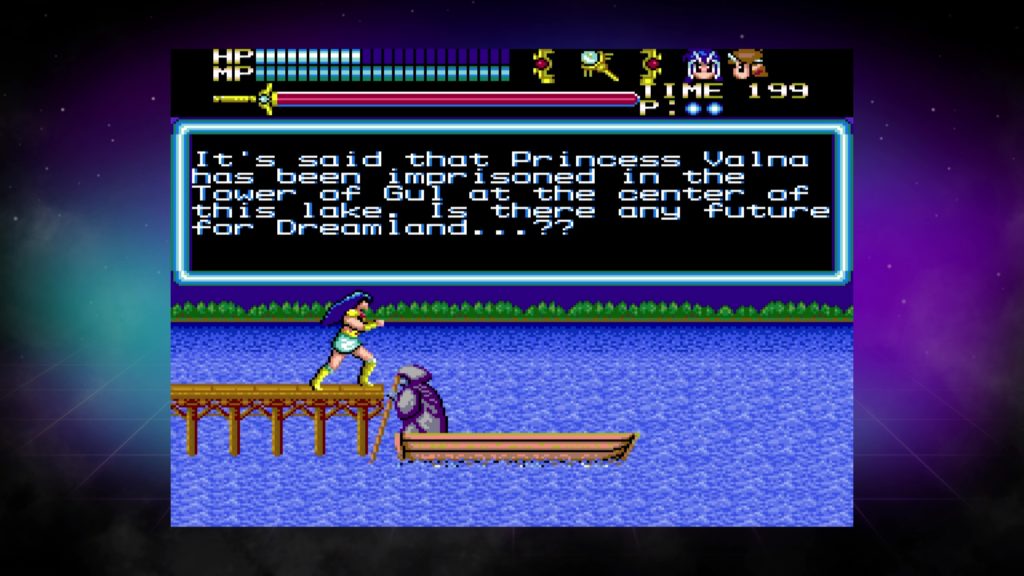
Where Valis III does do an excellent job is in contextualising each of the levels of the game — something the first installment wasn’t great at, at least in its Mega Drive incarnation. More often than not, there’ll be a cutscene or at least some dialogue before a new level explaining where Yuko is going, what she’ll be doing and the ultimate aim of this little excursion.
And the level design itself helps with the storytelling; a particular highlight in this regard is early in the game, where Yuko catches a ride on a small boat to reach a tower where her twin sister is imprisoned. Halfway across, the boatman betrays her and turns into a huge dragon, which she then has to defeat. While it is, of course, a thoroughly ridiculous situation, the added narrative context makes the whole thing flow rather better than if the dragon had just shown up “because video games”.
Mechanically, Valis III is much more solid than its predecessor, too. Rather than the different collectible sword power-ups, this time around Yuko is able to fire large energy blasts out from her sword right from the outset, and sword upgrades allow her to both increase the power and the charge speed of these blasts. Yes, charge speed; Valis III also features a power gauge at the top of the screen showing how strong Yuko’s next strike will be, allowing you to choose between quick, weak hits or slower, stronger strikes.
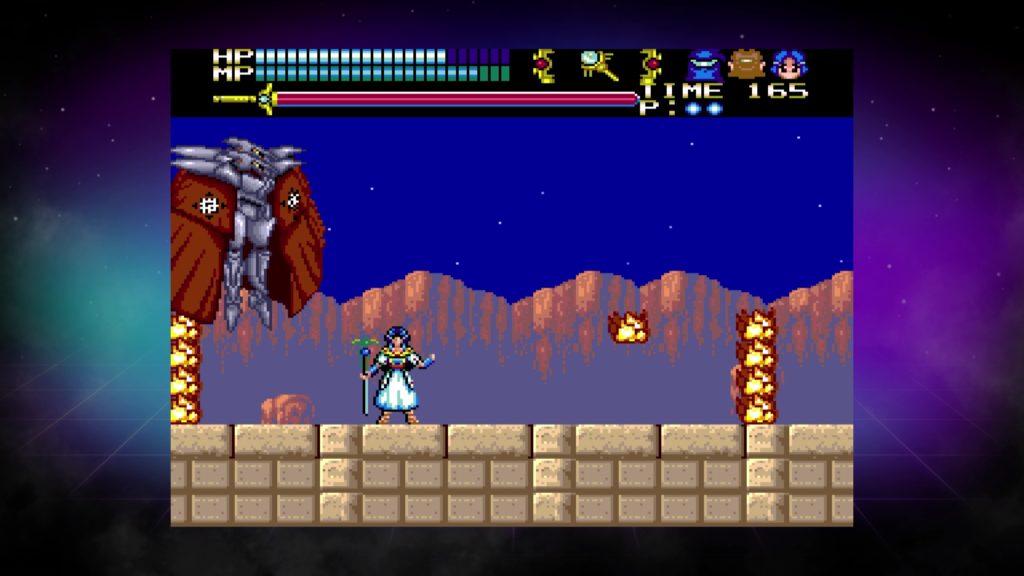
Perhaps more significantly, Yuko isn’t alone this time around, either; after rescuing both Cham and Yuko’s sister Valna, you are able to switch between all three of them at any point except during boss fights, and each have their own distinct capabilities. Yuko has her sword and its energy beams; Cham has a whip with a long reach, and Valna has slow-moving but powerful magic with good coverage. There are also three different colours of magic spell that Yuko and friends can pick up during levels; each character has their own unique effect for each colour, making for nine possible spells in total.
There’s no “correct” choice for which character to use when — though occasionally the plot demands that you either commit to one or forces you to play as a specific character — but you’ll definitely find that certain encounters in the game are seemingly much easier to make your way through with a particular member of the cast.
Probably the best example of this is a late-game boss named Zalude. This fight is very difficult to complete with Yuko or Valna due to the amount of movement required, while Cham’s long reach makes it a relative pushover as she can simply stand at a relatively safe distance and keep cracking away with her whip.
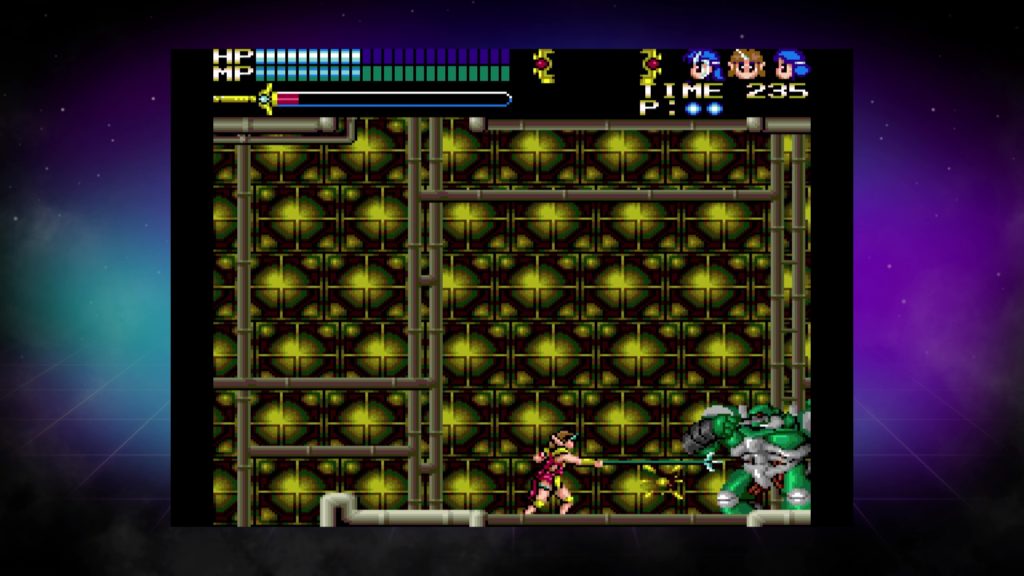
There’s some incentive to replay the game using different characters at different times, as you get unique dialogue scenes depending on who you’re in control of at important story moments or just prior to boss encounters. This is good, as it was one thing that the original Valis lacked; sadly, we’re still lacking a scoring system or different difficulty levels to choose from here, but it’s something at least.
It also feels like the replay potential matters a bit less, though, because Valis III is significantly tougher than its predecessor. Even the very first stage is likely to see you losing a life or two when you’re first getting used to the game — primarily due to the brutal Castlevania-style knockback Yuko suffers when taking damage, which will most certainly send her plunging to her death in a bottomless pit at least once during any playthrough.
There are also quite a few enemies seemingly specifically designed to be as irritating as possible — some robotic flies in the level where you encounter Zalude, along with Zalude himself, are absolutely infuriating to deal with until you figure out their patterns. Crucially, though, nothing feels unfair or cheap; there are sections that are very difficult to get past, sure, but for the most part — and indeed like in many other games on the Renovation Collection 1 cartridge — it’s about spotting and figuring out how to counter enemy patterns, or simply timing your moves carefully.
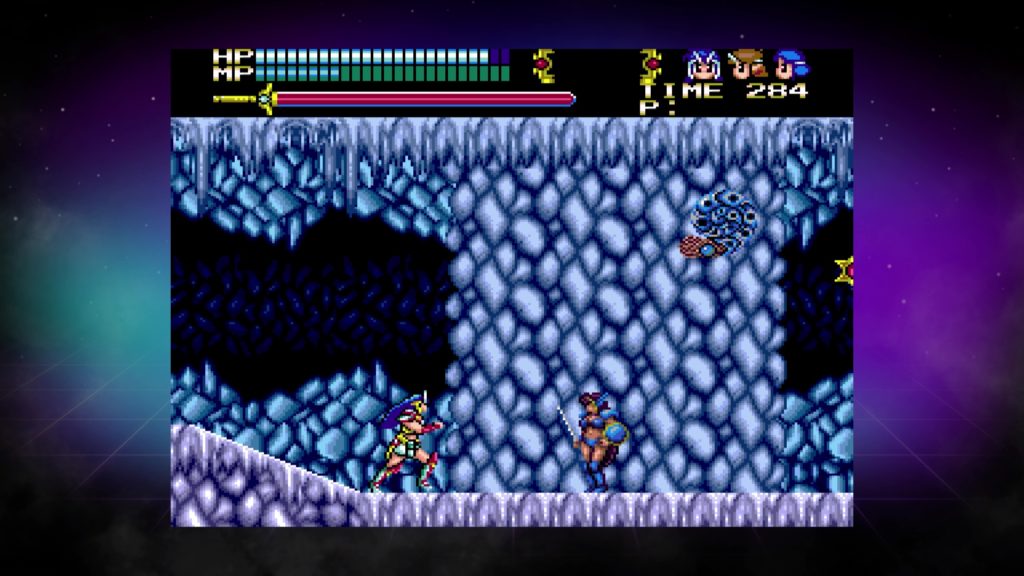
On the whole, then, Valis III is a massive improvement over the first game in many ways — both mechanically and artistically. The “game” side of things is much more solidly and consistently implemented, while the narrative aspect is considerably more ambitious and well-integrated into the unfolding action. It looks and sounds great, too, with beautiful pixel art, lovely animations both in-game and during cutscenes, and some of the most “Mega Drivey” music you’ll ever hear; if you love the distinctive sound of that YM2612 chip, you’ll be in heaven while listening to Valis III’s soundtrack.
The first Valis is still well worth playing, make no mistake, if only from a historical perspective. But it’s a lot easier to genuinely enjoy pretty much everything about Valis III.
Evercade’s Renovation Collection 1 cartridge is available to order now. Screenshots from the Evercade version running on Evercade VS.
Join The Discussion
Rice Digital Discord
Rice Digital Twitter
Rice Digital Facebook
Or write us a letter for the Rice Digital Friday Letters Page by clicking here!
Disclosure: Some links in this article may be affiliate links, which means we may earn a small commission if you make a purchase after clicking on them. This is at no additional cost to you and helps support Rice Digital!
- Letter from the Editor: passing the torch - June 30, 2023
- Super Woden GP 2 is looking promising - June 30, 2023
- Inti Creates is making a 32 bit-style Love Live action platformer - June 26, 2023







